Cables & Accessories Buyers Guide
Though not the most glamorous of products cabling is still a large part of any video production. Wireless video solutions can be used in places however you’re than likely going to need a few runs of cable at some point!
Scan stock a wide range of SDI, HDMI, fibre and any other cable you may need.
Coax – SDI and analogue
SDI connections use a run of coaxial cable terminated with BNC (Bayonet Neill–Concelman) connections. Although commonly referred to as SDI cable, SDI or Serial Digital Interface, refers to the standard of protocol, connection and cabling used.
Cables for SDI connections are often rated for a specific standard, like 1.5G, 3G, 6G or 12G. These standards refer to the bit rates used by that standard, for example 6G-SDI has a bit rate of 6Gbit/s. Although the quality of cable may not affect very short runs of a metre or so, when transmitting over a longer distance it becomes critical to ensuring that the signal is received at the other end. As such it’s important to use a cable rated for the video standard you are working in.
A lot of professional equipment also uses BNC and coaxial cable for analogue signals like component or composite video. As such these cables can also be used in these workflows. Due to the much lower data rate of analogue video standards, the rating of the cable is less important.
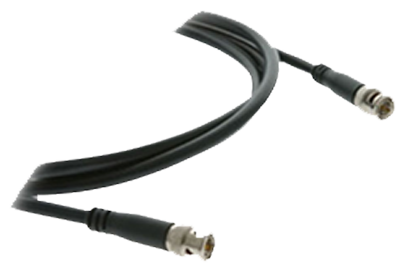
HDMI
HDMI or High-Definition Multimedia Interface standard was released in 2002. Primarily released for consumer devices, HDMI has been adopted in the professional video world as it provides high bandwidth data rates and allows for greater connectivity between devices.
HDMI like SDI has different standards that encompass a range of different formats. For example HDMI 1.4 supports formats up to 4Kp30 whilst HDMI 2.0 included support for up to 4Kp60. As such we recommend purchasing a cable that is rated for the standard you wish to work in.

Fibre
Optical fibre transmits data as light and allows for very long runs of cable. The most common type of fibre cable used in professional video applications is single-mode fibre, which can be run up to 25 kilometres. There are workflows that involve multi-mode fibre connections which has a shorter range supporting up to a maximum of 2 kilometres. Fibre cables can be terminated using different connections. Often you can purchase your own SFP (Small Form-factor pluggable transceiver) which will come with a choice of connector. The important part of fibre transmission is not the connector necessarily, but ensuring that the cable supports the wavelength of fibre signal you are transmitting. The most common wavelength in professional video is 1310nm (nanometers).
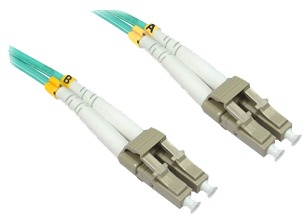
Analogue RCA
Although as mentioned above professional devices tend to use BNC and coaxial cables for analogue signals, some still do use RCA(Radio Corporation of America) connections. Although these connections also use coaxial cable RCA (also referred to as Phono or Cinch connectors) differ to BNCs. Unlike BNC they do not lock into place. These connections tend to be mainly for standard definition formats however component can support up to HD.
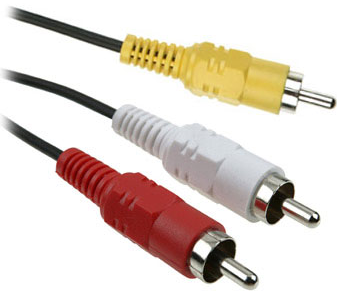
Thunderbolt and USB
Thunderbolt and USB are very common with production and post production when it is necessary to get a signal to or from your computer. The most common standards you will come across are Thunderbolt 2/3 and USB 3.0 and 3.1.
Thunderbolt 2 uses a Mini DisplayPort connector but this does not mean you can simply connect a Thunderbolt device to a Mini DisplayPort connector and it will work. Thunderbolt and DisplayPort use different protocols and for a Thunderbolt 2 device to function correctly it must be connected to a Thunderbolt port. You can identify whether your system has a Thunderbolt port as it should have a small lightning icon above the port itself.
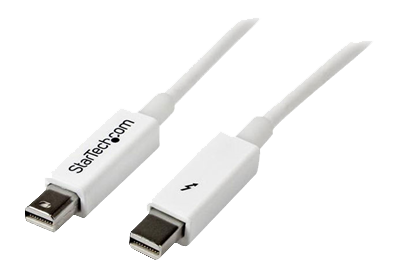
USB 3.0 devices connect using the standard USB type-A connector however the plastic insert in the connector should be blue. There is a large difference in the bandwidth available between USB 2.0 and 3.0 and for any uncompressed video signals they will need a USB 3.0 connection
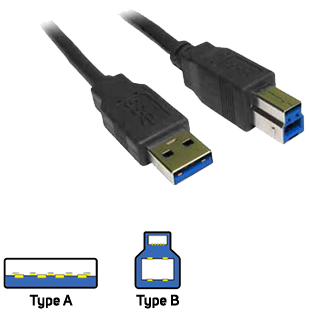
Thunderbolt 3 and USB 3.1 are often confused as they both use a USB type-C connector. Like Thunderbolt 2 and Mini DisplayPort connections, the protocol used in Thunderbolt 3 and USB 3.1 are completely different and it is important to make sure that your system has the connection you need before purchasing any peripheral devices.
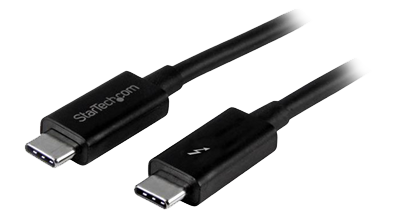
Attenuation over distance
A very important factor to keep in mind would be the length of distance you are running your cable over. Signals lose power when being transmit over any distance and in short runs this should not affect the signal at all. However, when using longer cable runs the signal may become so weak or distorted that the receiving device cannot interpret it. Many manufacturers provide attenuation ratings for their cables to show how far a signal can be transmitted. A rough idea of maximum lengths for each cable is:
|
SDI: HD-SDI |
HDMI: |
Fibre (Single-mode): |
Fibre (Multi-mode): |
Analogue (Composite): |
Analogue (Component): |
|
|---|---|---|---|---|---|---|
| Length | up to 100m | 5-10m | 20-25km | 1-2km | 100 feet | 16 feet |
The best cables and accessories
There you have it, everything you need to know when choosing cables and accessories. We hope you've found this buyers guide helpful. Don't hesitate to contact one of our friendly advisors for more advice if you still have questions on how to select the perfect cables and accessories. If you’re all set to go we recommend checking out the cables and accessories from these top brands.
VIEW RANGE